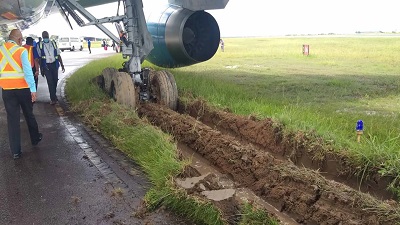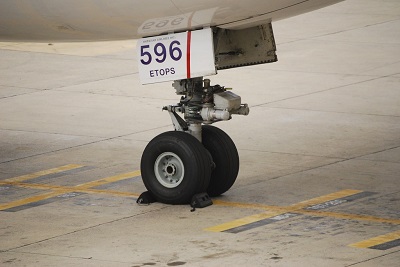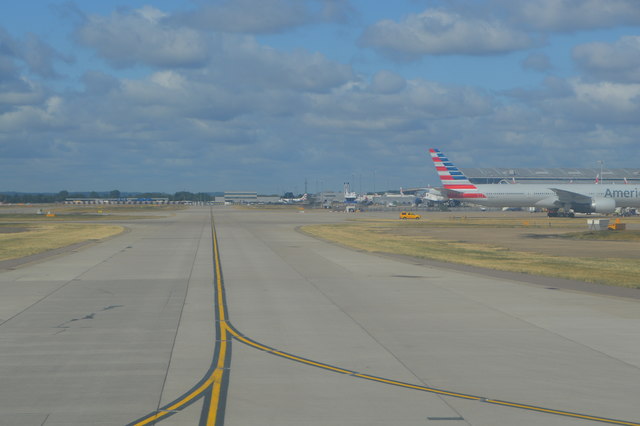
Why would a Plane go off a Taxiway? That was the question I was asked today by a reporter. My answer is below
The Situation
I was contacted by WCPO on November 27, 2023, they wanted my thoughts about an aircraft that departed the taxiway at Cincinnati / Northern Kentucky International Airport (CVG). They sent a clip with footage of the aircraft. The incident apparently occurred the night of November 26. “How could this occur”, I was asked.
When an aircraft departs a runway, it can be caused by poor landing or takeoff procedures, mechanical issues or poor weather conditions. However, how could an aircraft depart a taxiway?
One of my first thoughts was the condition of the taxiway. Runway Condition Reading (AKA RCR) is an indicator of how much friction aircraft tires can expect on the tarmac. A reading of 23 indicates a dry runway and ideal conditions. A runway/taxiway that has been rained on with no standing water would be a 12. A snow covered surface would be a 5. Of course, airport vehicles have equipment on board that can give an exact reading between 0 and 23. A 0 would indicate a frictionless surface.
I remember as a young aircraft commander taxiing on a snow/ice covered taxiway at Fairchild AFB. I remember feeling as though the aircraft was going to slide sideways off the taxiway. I called Command Post and used my pilot’s discretion to cancel the routine training mission.
Last night’s issue as CVG does not appear to be weather related, as in the rain covered taxiway does not seem to be slick enough to cause an aircraft to depart a taxiway.
Mechanical Problems
Another potential cause is mechanical. For example, perhaps the tiller wheel that controls the turning of the nosewheel could have been broken. The nosewheel(s) is what turns the large aircraft while on the ground. A less probable cause is differential thrust with one engine being at a higher power setting than the other causing the aircraft to turn, however, this is very unlikely at taxi speeds and conditions.
Situational Awareness
My best guess to the cause of the departure is a loss of situational awareness (SA) by the pilot team. I share in my book on Controlled Flight into Terrain, the following definition of situational awareness. It is the answer to the three following questions: What has happened? What is happening? What might happen? These questions were developed by Crew Training International and if a pilot can answer all three, then he/she likely has good SA at that moment.
Usually, a loss of situational awareness comes from channelized attention on a distraction. For example, Eastern Flight 401 went down in the Florida Everglades in 1972 as the pilot team focused their attention on a burned out light bulb. The autopilot became disengaged, and the planes descended, and the pilots never noticed. This accident is examined in detail in Doctor Aviation Session 13.
Some distraction usually captures the crew’s attention and then all the members focus on the distraction. It can be an unexpected radio call, a conversation on the cockpit, fixation on an instrument, there are a myriad of possible distractions.
The Solution
The primary job of the pilot at the helm is to maintain aircraft control. This applies on the ground as well as in the air. If channelized attention did occur among the two pilots in the cockpit, that is the root cause of the problem. One pilot needs to be focused squarely on flying (or taxiing) the aircraft.
The reporter asked me why so many emergency vehicles were at the scene. First is passenger and aircrew safety. If there was a more serious problem than just departing the taxiway (e.g., an engine fire) one would desire emergency personnel to be handy. Second, commercial flying for pilots is hours of boredom punctuated by moments of sheet terror. The same can be true of emergency personnel on the ground. They are often bored, and any abnormal situation is a chance to take some action they have been trained for.
The film reveals the ground crew trying to get some traction from the big aircraft tires in the wet grass/mud. Much like trying to get a car out of a wet ditch. It is not easy. For the pilots’ sakes, I hope it was some kind of equipment failure. Because if it was channelized attention and a loss of situational awareness, it is going to be very embarrassing for a couple of pilots.






